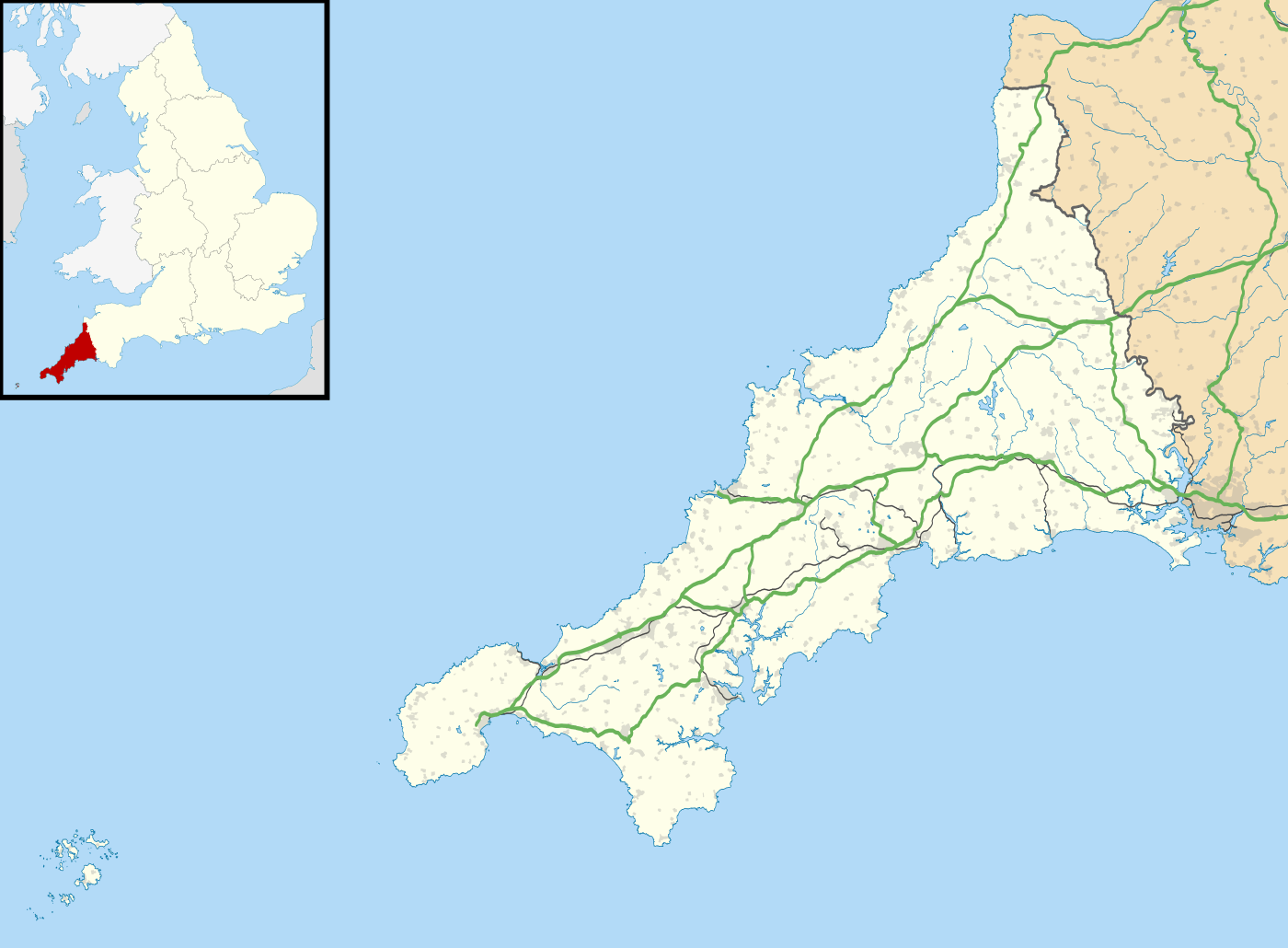Penhallam
| Penhallam | |
|---|---|
| Jacobstow, Cornwall | |
|
Penhallam Manor House | |
 Penhallam | |
| Coordinates | 50°44′56″N 4°31′06″W / 50.74901°N 4.51831°WCoordinates: 50°44′56″N 4°31′06″W / 50.74901°N 4.51831°W |
| Type | Moated manor house |
| Site information | |
| Controlled by | English Heritage |
| Open to the public | Yes |
Penhallam (Cornish: Maner Pennalyn/Plas Pennalyn[1]) is the site of a medieval manor house surrounded by a protective moat. It was designated as a Scheduled Monument in 1996 and is now in the guardianship of English Heritage.
Details
The site is situated in the civil parish of Jacobstow in north east Cornwall, England, United Kingdom, one mile west of Week St Mary and seven miles south of Bude.[2]
The site is a grass-covered ruin showing the complete ground plan of the manor. The manor dates from the late 12th century and was abandoned during the mid-14th century. Penhallam is one of only four such moated medieval manor sites in Cornwall and it consists of a quadrangle of buildings around a central courtyard.[3]
Some excavations took place between 1968–73 and the foundation trenches recorded by excavation can be seen as low, wire-framed and turf-covered earth banks. They revealed that the manor was built in four main phases. The original entrance was across a drawbridge on the south side that led to an early 13th century gatehouse; the drawbridge was replaced by a fixed bridge later in the century. The east range contains the earliest structure, dated around 1180–1200, which housed the domestic apartments. About 1200, a wardrobe and garderobe were added to the northern end of the domestic apartments. The third and most extensive phase took place about 1224–36, completing the north, west and south ranges with the hall, buttery, chapel and bakehouse. The kitchens and service wing were rebuilt around 1300.[4]
Historical records[5] show that the manor of Penhallam formed part of the honour of Cardinham, held by Richard fitz Turold in 1087, and by his descendants (eventually the de Cardinham family). Although Penhallam seems to have been built in various stages, Andrew de Cardinham is assumed to have been responsible for the main (third) building phase, in the 1220s and 1230s. The male line became extinct on his death in about 1256.[4] Therefore, his lands were then split equally between his daughters.[6]
By 1270, Andrew's heiress, Isolda de Cardinham, had given Penhallam to the Champernowne family, who held the manor for the rest of the manor's habitation. During much of the early 14th century, it was occupied by the Beaupre family as tenants. It is thought that the site was abandoned by about 1428 when the land was divided into six partitions.[4]
See also
References
- ↑ "Cornish Language Partnership : Place names in the SWF". Magakernow.org.uk. Retrieved 2015-07-15.
- ↑ Ordnance Survey: Landranger map sheet 190 Bude & Clovelly ISBN 978-0-319-23145-6
- ↑ "Access to Monuments - Penhallam". Historic-cornwall.org.uk. 2007-09-14. Retrieved 2015-07-15.
- 1 2 3 "Detailed Result: PENHALLAM MANOR". Pastscape. 1996-06-18. Retrieved 2015-07-15.
- ↑ Medieval Archaeology: journal of the Society for Medieval Archaeology; 18 (1974), pp. 90-145
- ↑ "Penhallam Manor".
